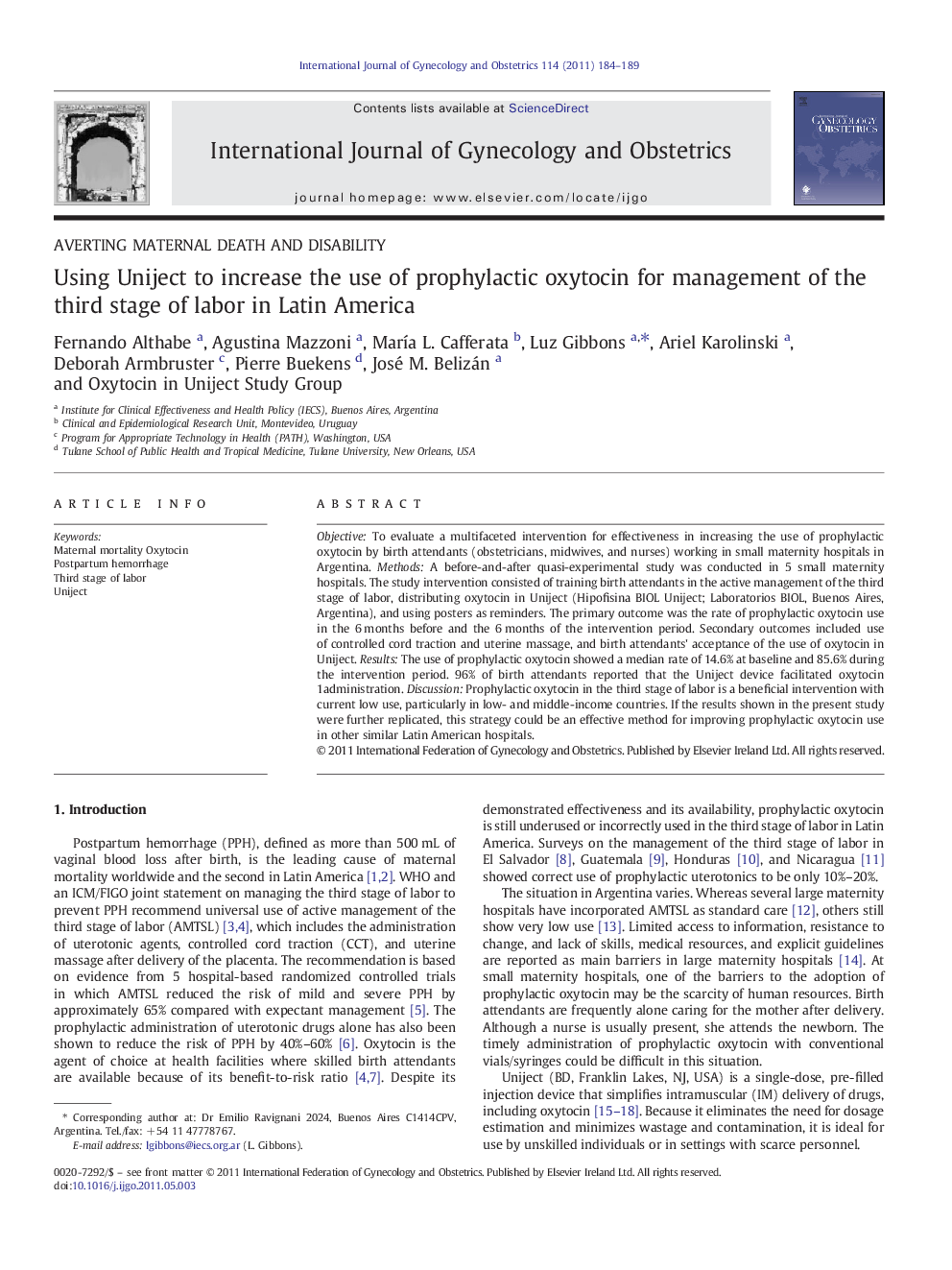| Article ID | Journal | Published Year | Pages | File Type |
|---|---|---|---|---|
| 3953590 | International Journal of Gynecology & Obstetrics | 2011 | 6 Pages |
ObjectiveTo evaluate a multifaceted intervention for effectiveness in increasing the use of prophylactic oxytocin by birth attendants (obstetricians, midwives, and nurses) working in small maternity hospitals in Argentina.MethodsA before-and-after quasi-experimental study was conducted in 5 small maternity hospitals. The study intervention consisted of training birth attendants in the active management of the third stage of labor, distributing oxytocin in Uniject (Hipofisina BIOL Uniject; Laboratorios BIOL, Buenos Aires, Argentina), and using posters as reminders. The primary outcome was the rate of prophylactic oxytocin use in the 6 months before and the 6 months of the intervention period. Secondary outcomes included use of controlled cord traction and uterine massage, and birth attendants' acceptance of the use of oxytocin in Uniject.ResultsThe use of prophylactic oxytocin showed a median rate of 14.6% at baseline and 85.6% during the intervention period. 96% of birth attendants reported that the Uniject device facilitated oxytocin 1administration.DiscussionProphylactic oxytocin in the third stage of labor is a beneficial intervention with current low use, particularly in low- and middle-income countries. If the results shown in the present study were further replicated, this strategy could be an effective method for improving prophylactic oxytocin use in other similar Latin American hospitals.
